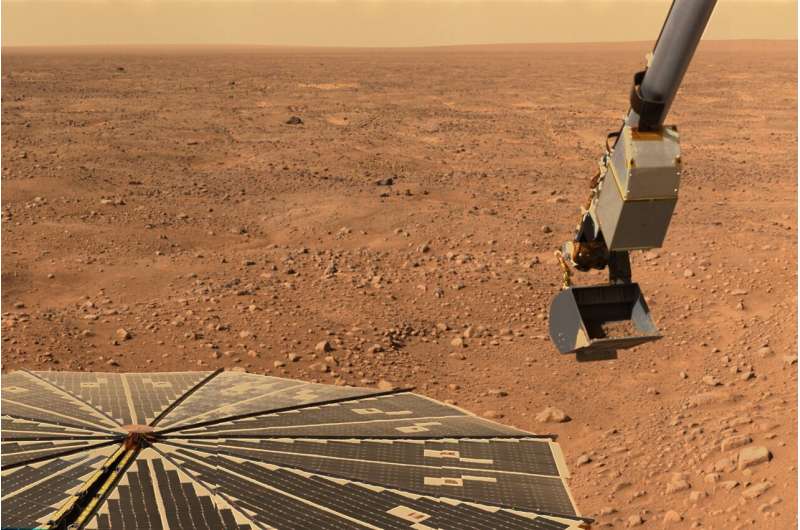This article has been reviewed according to Science X's editorial process and policies. Editors have highlighted the following attributes while ensuring the content's credibility:
fact-checked
trusted source
proofread
Mars region offers NASA rover environment to search for evidence of ancient microbial life

Purdue University scientist Briony Horgan is leading NASA's Mars rover into unfamiliar territory as the mission turns toward its next opportunity to find ancient signs of life on the red planet.
The rover Perseverance is searching for evidence of ancient microbial life in Mars' rock record in deposits along the margin areas around Jezero Crater, where the rover initially landed. Any life that once existed on the red planet may have left behind chemical clues that Horgan hopes can still be found in the deposits as part of the rover's "margin campaign."
Horgan said the new region could be like a "bathtub ring" that extends around up to a third of the crater's inner margin. Orbital data suggest it is filled with deposits of carbonate minerals, comparable to different shoreline or beach areas on Earth. Carbonates offer the potential to hold and preserve evidence of life that may have existed in the shallow water believed to have been along the shoreline area.
Horgan said the rover mission arrived in the margin region this week and has just started collecting samples.
The rover landed in February 2021 in Jezero Crater, just north of the Martian equator. The crater used to contain a lake about the size of Lake Tahoe. Horgan led a study of the mineralogy of the site, which produced one of the results that contributed to the selection of Jezero Crater for the mission.
Horgan has assumed the role of campaign science co-lead for this portion of the mission, given her expertise in geology. Horgan has worked as long-term planner as part of the science leadership team for Perseverance. Co-lead for this part of the mission is Brad Garczynski, one of Horgan's doctoral students.
The margin area is one of the main exploration targets for the mission, which has been ongoing for more than two and a half years. Horgan said it's expected that Perseverance will explore the margin area until May, with plans to also examine a river channel that cut through the rim of Jezero Crater and was the source of the delta deposits. The rover is expected to collect samples of carbonate from the margin region.
The shoreline carbonate isn't the only feature to be investigated during this part of the mission. Perseverance also will attempt to find igneous rocks that have been altered to form carbonate, providing an opportunity to address additional astrobiological and environmental aspects of Mars' geological record.
Carbonate minerals commonly form in certain bodies of water on Earth when the water chemistry favors their precipitation. The process can be mediated, or the precipitation of minerals caused, by the action of microorganisms that inhabit the water.
"Normally, we see carbonates forming on Earth in very shallow water, and they are great for trapping signs of microbial activity because these shallow zones are fed by light and nutrients coming in," Horgan said. While some microorganisms are photosynthetic and can use sunlight as a metabolic energy source, others can feed on certain chemicals present.
Horgan said the team will closely examine the textures of the carbonate to determine the potential it holds for signs of life.
This is the latest step for the Mars rover mission, which began with a July 2020 launch and 300-million-mile trip through space. The mission is intended to last until the Mars Sample Return mission lands, close to 2030.
Provided by Purdue University





















